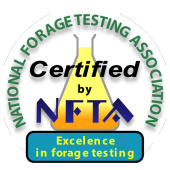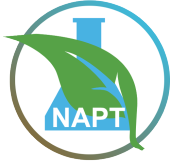Soil & Plant Testing
Custom Laboratory provides soil and plant testing. We analyze soil, plant, water, manure, compost and greenhouse media. Our services are available to farmers, homeowners, horticulturists, golf course managers, consultants, researchers and government agencies. Custom Laboratory provides quality testing and unbiased, research-based recommendations to clients for economically viable and environmentally safe nutrient management practices.
A soil test measures the relative soil fertility levels. It is a basic tool in planning an economically and environmentally sound fertility program. Custom Laboratory also provides plant tissue analysis.
Soil Fertility Tests Include:
- pH
- Extractable Sulfur
- Organic matter
- Calcium
- Magnesium
- Potassium
- Phosphorus
- Soil micronutrients including: Sodium, Iron, Manganese, Zinc, and Copper
- Organic matter
- Our test results provide fertilizer and lime recommendations.
Soil Testing
The soil testing process consists of the following components: Sampling – Sample Preparation – Nutrient Extraction and Chemical Determination of these Nutrients – Determination of pH and Quantity of Soil Acidity, and – Evaluation of the Tests – Resulting in fertilizer and lime recommendations. Each of these components play an important role in obtaining an accurate and useful soil test.
How to Take Sample for Testing
A soil sample should be representative of the soil in the field, or area, wishing to be tested. A sample should represent no more than 20 acres. To obtain samples that represent this size or smaller, partition fields into areas based on past management, surface color, texture, and slope. After determining the area to be tested, take 10 to 20 soil cores across the area at a depth of 6–8 inches. Place the soil cores into a clean plastic bucket, break apart the cores and clods, and mix them together. From this mixture, fill a clean soil sample box or bag with approximately a two cup size. Identify the sample by a number or name on the sample container. If the sample is not taken to Custom Laboratory on the day it is collected, place it in a dust free location with the container open to allow drying of the sample.


